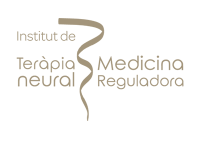Somatic Healing
13 Minutes
It’s not just in your head; your body stores traumatic experiences as well. Somatic healing therapy can aid in their disposal. Somatic healing encompasses therapies that emphasize the mind-body link. Somatic refers to something that is “related to the body.”
A somatic healer helps you relieve any trauma that became “stuck” in your body by employing effective techniques. While resolving the mind-body connection is a comparatively recent concept in Conventional medicine (in the West, the body and mind are typically treated independently), it has been recognized for centuries in Eastern medicine and ideologies.
Somatic healing derives from somatic psychology, a body-centric approach to psychology. Somatic therapies function by targeting the continuous feedback loop between the body and the mind.
Somatic healing therapy varies from conventional psychotherapy (talk therapy). In conventional psychotherapy, the therapist solely involves the mind. In somatic energy healing, the body serves as the basis for healing.
Somatic healing trauma therapists think that a person’s unpleasant emotions, like those encountered during a traumatic incident, can become trapped within the body.
If these unpleasant emotions are not discharged in a timely fashion, they might lead to physical ailments or psychological disorders, like back or neck discomfort. People with a diagnosis of post-traumatic stress disorder frequently suffer from chronic physical discomfort.
Somatic therapists utilize mind-body approaches to alleviate the physical and emotional strain caused by pent-up stress. These practices may include meditation, breathing exercises, dance, or other types of body movement.
Somatic counseling therapy practitioners believe that the body and mind are inherently intertwined. They also think that trauma and other chronic unpleasant emotions can become stuck within the body and negatively impact mental health.
Somatic healing is aimed to facilitate cellular healing.
How then do these feelings become trapped within the body? The nervous system may become locked in survival mode following a stressful experience. Continuous production of stress hormones like cortisol causes a rise in blood pressure and blood sugar, which can impair the immune system.
When the body is consistently subjected to this amount of stress, physical problems begin to manifest.
In addition, certain negative experiences might result in deeply ingrained perceptions that our conscious experience cannot even perceive. Such ideas may include “I am a horrible person” or “I will never be productive.”
These bad emotions do not only hide in the body; they frequently manifest. Traumatized individuals have their symptoms revived by subsequent stressful situations. This can result in repeated traumatic experiences.
The research on somatic therapy is really encouraging.
In one study, patients with PTSD who were involved in a form of somatic healing known as “somatic experiencing” demonstrated significant reductions in depression and PTSD symptoms.
According to the somatic experiencing theory, PTSD symptoms are a manifestation of stress activation.
Somatic experiencing, unlike exposure treatment (a prevalent type of psychotherapy employed for PTSD), typically does not need a detailed recounting of the horrific incident. Rather, the client recalls painful events that cause high-stress levels and then works to reduce the arousal through kinesthetic awareness and other approaches.
Several studies demonstrate the efficacy of eye movement desensitization and reprocessing (EMDR), a sort of somatic treatment.
In Eye Movement Desensitization and Reprocessing (EMDR), the client recalls painful situations while moving their eyes from left to right. This therapy can facilitate the quick processing of previously unprocessed traumatic memories and alleviate bodily symptoms.
The usefulness of EMDR therapy for treating emotional trauma and other unpleasant life situations was supported by 24 studies, according to a 2014 review. Seven out of ten studies indicate that EMDR therapy produces faster positive outcomes than trauma-focused cognitive behavioral therapy.
A somatic therapist can utilize a variety of approaches to assist the body in releasing trauma or unpleasant emotions. Here are a few of the most common:
Body awareness. This is one of the initial steps in learning and practicing to relieve physical tension. The client is taught to recognize and identify regions of tension in the body, as well as to quiet their thoughts and emotions.
Grounding. This is the act of establishing a deep connection with your body and the planet. Grounding your feet, sensing the body, and relaxing the nervous system constitute grounding.
Pendulation. A therapist leads you from a state of relaxation to one that feels comparable to your traumatic event using this technique. This may be repeated multiple times, helping you to expend pent-up energy. Although the energy is being released, you may experience discomfort or anxiety. You will be directed back to a tranquil condition each time. You will eventually learn to achieve a state of relaxation on your own.
Titration. The therapist helps you through a distressing memory using this technique. You will be asked to note any physical changes that occur while you explain the recollection. The therapist will assist you in addressing any bodily sensations as they occur.
Sequencing. This requires paying great attention to the sequence in which tension leaves the body. For instance, you may initially feel a tightening in your chest, followed by a tightening in your throat. Then, you may experience trembling as the tension departs your body.
Resourcing. This entails identifying your attributes and resources that make you feel confident and safe, like personality strengths, your relationships, or even a cherished vacation spot. It can encompass anything that induces calmness. The positive emotions and sensations you identify with your resources serve as an internal emotional anchor.
Listed below are the most prevalent types of somatic therapy.
Somatic Experiencing
Somatic experience treats the physical manifestations of trauma.
Others may merely ask you to explain the bodily sensations you had during the distressing occurrence. You may be required to perform movements that evoke negative emotions.
The therapist will instruct you on how to safely release the accumulated energy so that you can progressively eliminate the trigger.
Hakomi
Hakomi is a form of somatic treatment that emphasizes mindfulness, or the capacity to observe the current moment without prejudice.
After establishing an atmosphere of loving acceptance, the practitioner assists the client in identifying physical signs of unconscious beliefs. The client swiftly accesses unconscious information and collaborates with the psychotherapist to release it safely.
EMDR
In EMDR treatment, the client recalls traumatic events in small doses while focusing on an external stimulation at the same time, with sideways eye movements being the most prevalent. Other focal approaches could include listening to a certain sound and tapping the hand.
Sensorimotor Psychological Treatment
Sensorimotor psychotherapy integrates psychotherapy, attachment theory, somatic therapy, and neuroscience with Hakomi method practices.
This treatment assists the client in safely reliving a traumatic event and completing any unfinished acts (like not being able to fight off an attacker) from the first occurrence. This is performed to reach a sense of conclusion and completion.
Neurosomatic Treatment
Neurosomatic therapy is beneficial for clients whose symptoms are closer to the physical end of the mind-body continuum. NST reveals the concealed origins of physical discomfort and tension in the neurological system, skeletal system, and soft tissues.
This approach relies mostly on massage, postural work, and exercises to rectify imbalances.
Somatic counseling and treatment can address any deeply buried, repressed unpleasant emotion. Typically, this is the result of a traumatic event, although the therapy can also assist individuals with:
- Sadness
- Frustration
- Depression
- Anxiety
- Trust
- Connection
- Insecurity
Somatic therapy has been demonstrated to be an effective treatment for various mental and physical disorders.
Chronic Pain
Some may find it unexpected that a sort of psychotherapy can alleviate physical pain, yet research has demonstrated this to be the case. Somatic therapy was shown to be an effective therapy for cervical myofascial pain in one research study, and the efficacy was not enhanced by the addition of acupuncture.
Post-Traumatic Stress Disorder
Somatic experiencing as a PTSD treatment has been shown to be an excellent strategy for improving recovery from a traumatic experience.
Early studies of somatic therapy have shown that it is an effective treatment for PTSD, with “mixed model linear regression analysis showing significant effects of the intervention for depression (Cohen’s d = 0.7 to 1.08) and posttraumatic symptom severity (Cohen’s d = 0.94 to 1.26), both pre-post and pre-follow-up”
In other words, somatic healing therapy may be a treatment option for PTSD; however, additional research is required to determine which patients will benefit the most from this sort of therapy.
According to research conducted on tsunami survivors, ninety percent of individuals reported considerable improvement or absence of arousal, intrusion, and avoidance symptoms. The findings demonstrate the efficacy and dependability of this customized version of Somatic Experiencing Therapy in treating trauma reactions.
Factors To Consider
Similar to any form of treatment, it is necessary to be in a mental and emotional state that allows you the time & effort to process complex emotions. When performing somatic therapy in person, touch is frequently utilized. Therefore, it is prudent to guarantee that you do not mind being handled by others.
Touch relies heavily on bounds and consent, and you’ll never be approached without your permission.
It is not believed that somatic therapy poses any dangers that are distinct or specific to its format.
Peter Levine, the pioneer of somatic healing therapy states that a therapist is skilled, trained, and focused on providing a safe environment for you. However, if you engage in somatic exercises with a therapist for an extended period of time, you may develop an attachment to them and believe that they are the only location where you feel completely safe.
Therefore, according to Levine, it is crucial for therapists to provide tools and practices that can help you to feel secure on your own, as well.
Keeping the preceding information in mind, below are some somatic healing exercises you may like to perform at home:
Grounding
Grounding activities help you become centered and anchored in the present. This might help you divert your attention away from troubling past events.
Grounding may be especially beneficial if you are having flashbacks, dissociation, or anxiety.
Here are several home-based grounding techniques:
Apply water to your hands. Start by washing your hands with cold water. Consider the warmth of each area of your hand, from the wrist to the fingertips. Using warm water, observe how the sensations on your hands transform. Perform this for a few moments until you feel calmer.
Move your body however you feel most comfortable. This may involve hopping, dancing, running in place, or relaxing. Concentrate on how your body is feeling as you move. This is possible with a body scan: Begin with your toes and work your way up to your face, body part by body part.
Concentrate on your breath while regulating your inhalation and expiration. You can begin by breathing for four counts, holding for three seconds, and then exhaling for four counts. Additionally, you might repeat a positive word after each inhale. For example, secure, tranquil, simple, or gone.
Tensing and relaxing various bodily parts. For instance, press your feet as firmly as possible against the ground for a few seconds. Relax your feet and take note of how they feel now. You can also hold the chair’s arms as tightly as possible and then gradually relax and release them.
Play a game of “categories” with yourself. Consider many kinds of items, such as pets, states, and cities, that start with a given letter. Do not switch to a different letter until at least five objects beginning with that letter have been identified.
Resourcing And Visualization
Resourcing involves tuning in to specific physical sensations that could be contrary to what you are now experiencing. This is often a lengthy procedure that is assisted by a therapist, although performing particular exercises at home could help you get started.
You should begin these procedures with a licensed somatic therapist, but you can thereafter supplement your treatment with these at-home exercises.
You can utilize both resourcing and visualization whenever you experience upsetting ideas, emotions, or physical sensations. By establishing a “secure” feeling in your body and mind, you can alleviate some anxiety.
These activities may require practice. You may wish to begin by performing them when you are not experiencing distress. This could make it easier to duplicate the sensations when necessary.
Here are some possible approaches:
Create a secure mental space. You can accomplish this by recalling a place and time where you felt secure and content. You could identify a haven that you have not yet encountered. Consider its hues, odors, and textures. Feel your body and concentrate on how relaxed you are.
Consider the people you care about who bring you comfort. You could begin by looking at photographs of them or concentrating on shared memories.
Body scans
Expert health practitioners characterize body scans as “active meditation” that can assist with relaxation.
Here’s how to conduct a body scan:
Begin by assuming a comfortable position, possibly seated. Close your eyes.
Concentrate on the lower body. Observe the sensation of your feet on the floor. Slowly shift your focus to your pelvis, thighs, knees, and finally your ankles. As you descend the body, identify pressure, tension, temperature, and any other sensations.
Take some deep breaths and exhale as you release any tension you feel. You can go on to the next body part when you feel it relax.
When you are finished exercising your lower body, go on to your upper body. Include internal organs such as your heart, stomach, and lungs.
Finish by concentrating on your head, face, and neck.
Self-regulation
Emotional self-regulation often entails directing yourself across your emotions so that you may change gears when they’re causing you to feel upset. Self-regulation in somatic therapy relates to the neurological system.
Unresolved trauma may result in autonomic nervous system dysfunction. This may need you to be on constant high alert. Consequently, you may respond to everyday stress and situations as influenced by your past trauma.
The somatic experiencing approach suggests that talk therapy might not always be able to penetrate or make use of this complicated body process. Instead, by engaging your bodily senses, you may be able to release and alter these patterns.
You might try some of the following simple tactics at home to help you manage yourself:
You should hug yourself. Fold your right arm across your chest and place your hand on top of your heart to do this. Then, place your left hand on your right shoulder blade while crossing your left arm. As per Levine, this can induce a sense of confinement, which may make one feel secure. Hold the embrace for as long as necessary.
Tap your entire body, from your feet to your head, using your hands in a cupped posture. In addition to tapping different regions of your body, you can also try squeezing them. This will not only assist you with grounding, but it will also help your body understand your boundaries, giving you a sense of being confined and secure.
FAQs
Does Somatic Therapy Involve Movement? Or Is It Talk Based?
Somatic treatment is primarily grounded in stillness. Being directed to turn within and study the terrain of the body. The customer remains completely dressed and with their back on a massage table or chair throughout the entire session. The somatic healer applies light touch and delicate movement to main body regions such as the feet, shoulders, hips, and head. The “conversation” is a discussion between the therapist and the patient, as well as between the patient and their own body, and even between portions of their body. The somatic healing therapist will ask questions during the session for the patient to react to what they observe happening in their body and where. The client can further describe and investigate the sensations they are conscious of and feeling in their body as a result of more questions. The body communicates to the client the themes it contains that must be recognized, connected to, and cared for. This is how healing takes place.
Are Somatic Healing Therapy Sessions Held In Person, Virtually, Or Both?
Somatic healing therapists conduct in-person and online virtual sessions with clients.
HOW SENSES CAN HELP WITH Wellness
Senses is a leading provider of luxury addiction and mental health treatment for affluent individuals and their families, offering a blend of innovative science and holistic methods with unparalleled individualised care.
A UNIQUE METHOD
successful and proven integrative holistic conceptOur program consists of treating only one client at a time individually designed to help you with all the problematic aspects of your life. All individual treatment sessions will be held at your private residence.
more infoYour program is designed based on your personal needs. The team will exchange daily information and adjust the schedule as we go. Our therapists will work with you treating integrative not just the symptoms and goes beyong your stay to ensure lasting success.
more infoOur biochemical imbalance can be affected by diet and stressful life events, but it often goes back to genetics and epigenetics. We do specific biochemical laboratory testing to determine an individual’s biochemical imbalance. Combining the results of the lab tests with anamnestic information and clinical tests, we prescribe an individualized and compounded vitamin, mineral, nutrient protocol to help recover from various disease states.
more infoOur experts combine the best from psychological treatment, holistic medicine to support you individually and providing complementary therapies all coordinated from one source working complementing each other integrative.
more infoUsing latest cutting-edge technology-based therapies such as Neurofeedback, tDCS, and SSP, we can track the biological patterns of your body, giving us valuable insight into your health and well-being as well support your brain and body performance and recovery with neuromodulation.
more infoOur chef and nutrition specialist will design your personalized diet plan supporting your body & mind recovery as well as helping with weight management. Nutrition workshops and mindful eating sessions will help you to maintain a healthy lifestyle.
more infoWellness TREATMENT LASTING APPROACH
0 Before
Send Request
0 Before
Define Treatment Goals
1 week
Assessments
1-4 week
Integrative Holistic Therapies
5-12 week
Aftercare
12+ week
Refresher Visit
Wellness Insights
latest news & research on Wellness
Stress Management
Stress management isn't a magic wand that makes stress vanish. Instead, it's a toolkit full of strategies and techniques that help you handle stress better
read more
Leadership Burnout
Leadership burnout, often termed executive burnout or executive stress syndrome, encapsulates the exhaustive toll that high-stakes leadership roles take on individuals
read moreAccreditations





























































